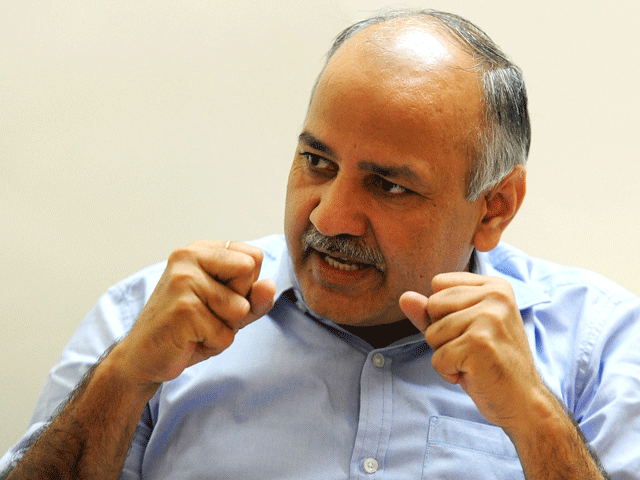Tax benefit to first-time home buyers to be a game changer: Nandita Chatterjee
The secretary said the scheme is expected to be notified shortly and will be effective from January 1, 2017.
 NEW DELHI: The government will give a benefit of `. 2.4 lakh to first-time home buyers with taxable income below Rs 18 lakh a year, which would be a game changer for the sector, Housing and Urban Poverty Alleviation Secretary Nandita Chatterjee said.
NEW DELHI: The government will give a benefit of `. 2.4 lakh to first-time home buyers with taxable income below Rs 18 lakh a year, which would be a game changer for the sector, Housing and Urban Poverty Alleviation Secretary Nandita Chatterjee said. The amount is equivalent to the total interest subsidy over a 20-year loan and will be given upfront to the housing financing company, through nodal agencies such as National Housing Bank and Hudco to reduce the outstanding loan.For a 15-year loan, the value of the benefit would be Rs 2.2 lakh.
The secretary said the scheme is expected to be notified shortly and will be effective from January 1, 2017. "This is the first time we are talking about the middle-income group. We were hoping that this scheme would be a game changer," Chatterjee told a gathering of real estate developers and housing finance executives at the ET Roundtable on Housing for All.
Industry executives agreed. PNB Housing Managing Director Sanjaya Gupta said this would make projects affordable as EMI fall.Amit Bhagat, CEO of ASK Property Investment Advisors said: "The move will increase the affordability and eligibility of more than 90% home buyers as taxable income of . 18 lakh is significantly on the hig` her side."
The Pradhan Mantri Awas Yojana announced by Prime Minister Narendra Modi on December 31 gives homebuyers subsidy at different rates depending on their income.
For annual income below Rs 6 lakh, the subsidy is 6.5 percentage points on a principal component of Rs 6 lakh, regardless of their total loan. For income up to Rs 12 lakh, the subsidy is 4 percentage points on a principal component of Rs 9 lakh, and the highest income category, up to Rs 18 lakh, its 3 percentage points on a principal component of Rs 12 lakh. "For the last two years, the government has been trying to make an environment where affordable housing can be pushed ahead. Affordable housing has become an important sector," Chatterjee said.
Industry leaders said infrastructure status for affordable housing would ensure easy access to capital for such projects. "The infrastructure status makes life easier for us. The interest rate subvention will kickstart the demand," said Manoj Gaur, MD of Gaursons.
Getambar Anand, chairman, ATS Infrastructure, said there was a lot of ambiguity in defining affordable housing and said a uni form definition was needed.
HDFC's Sanjay Joshi said home loans should also cover stamp duties which are10% of the cost. "It will make it very easy for homebuyers to acquire property since there will have easy access to funds," he said.
SD Gupta of International Finance Corporation said housing finance firms needed more long-term funds from banks to meet the huge requirement of affordable housing.
Developers such as Stellar Group's Akshay Sethi said the government must define `carpet area' that qualifies for affordable housing in various metros. Eldeco MD Pankaj Bajaj echoed the view and added: "Developers should not be forced to use 90% of the Floor Area Ratio (FAR) if he is willing to give it up."
Emaar Group's CEO Sanjay Malhotra sought harmonising of centre's and states' regulations. "There exists a lot of dichotomy between the Centre's directions and the way states act. Developmental restrictions like size of the housing project in a lot of states create anomaly in the market," he said.
Shrikant Paranjape, chairman, Paranjape Schemes (Construction), said the government should help reduce construction costs and suggested SEZ-like structures for affordable housing. "When it comes to real estate developers, cost of land is insignificant for affordable housing. We want to reduce the cost of construction," he said.
Mahendra Singhi, group CEO, cement, Dalmia Bharat Cement, and Sanjay Kumar Gupta, chief marketing officer, Ambuja Cements, proposed the Mexican model of setting up an SPV with private players, states, developers and other stakeholders for affordable housing.
Gourav Bhutani of Shapoorjii Pallonjii said the approvals process are lengthy and costly, which would obstruct the goal of housing for all by 2022.
Arun Gupta


 NEW DELHI: Land and
NEW DELHI: Land and  NEW DELHI: The
NEW DELHI: The